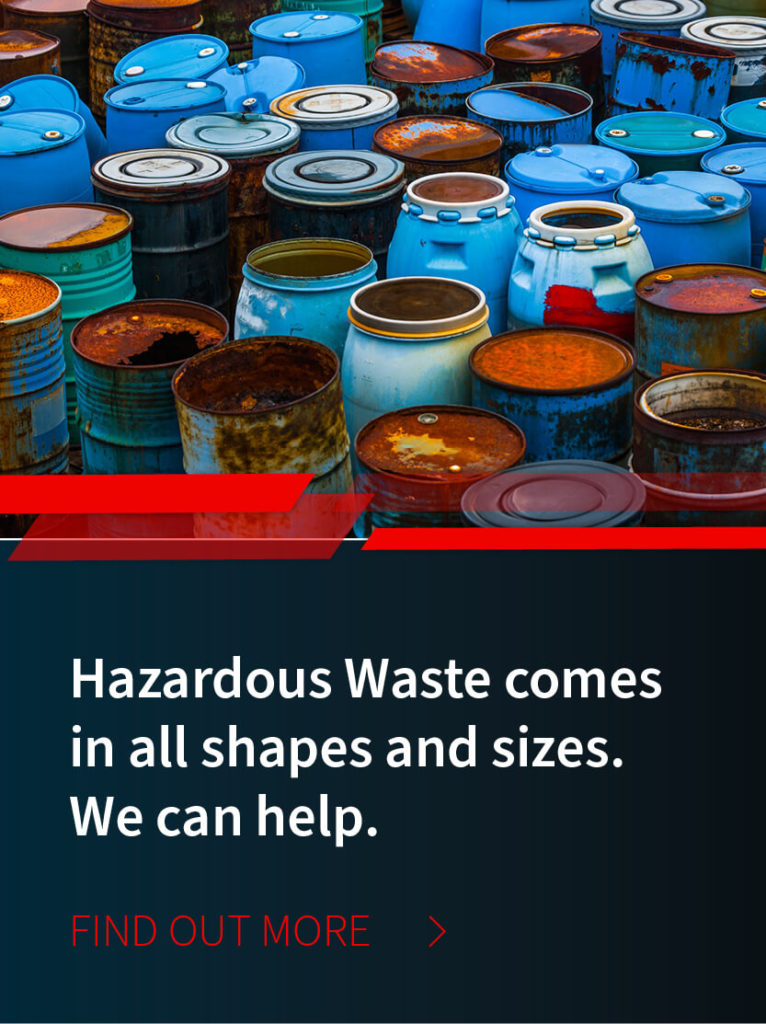
/ IN THIS BLOG
01 / What is a Hazardous Waste Contingency Plan?
A hazardous waste contingency plan is a document that stipulates the exact protocol your facility should take in the event of any accident (fire, spill, explosion, or so forth) that might occur with generated hazardous materials.
An accident is just that—an accident. It's not planned or expected, so your facility needs to be prepared for such an event. A contingency plan can help you accomplish just that. Should something catastrophic happen and you're not completely prepared with steps that you and local authorities need to take – depending on the substances involved - it can mean improper cleanup, slower response time, and an increased risk for human safety or property damage.
Hazardous waste safety is serious business. If you're not prepared for an accident or even a worst-case scenario, serious ramifications might occur. Such ramifications also apply to any hazardous materials that leach into the ground, water, or surrounding environment. Lack of preparation might also severely impact the safety of first responders who arrive at the scene or for clean-up crews.
Your facility is also responsible for properly describing and labeling any hazardous materials that leave your site through a hazardous waste transportation and disposal company. A spill or accident while transporting hazardous waste can pose a number of different issues than an on-site incident, and the contingency plan needs to reflect those differences.
02 / Contents of a Hazardous Waste Contingency Plan
The contents of a hazardous waste contingency plan are vital. Follow the guidelines of the Code of Federal Regulations (CFR Section 264.52) for guidance. For example, the contingency plan must ‘ describe the actions facility personnel must take to comply with specified codes (§§ 264.51 & 264.56) in response to fires, explosions, or any unplanned sudden or non-sudden release of hazardous waste or hazardous waste constituents to air, soil, or surface water at the facility.’
The plan must also describe agreements between the facility and first responders as well as hospitals and local and state emergency response teams to coordinate required emergency services.
Individuals tapped as emergency coordinators must also have their names and contact information included in the contingency plan. This information must be kept up-to-date.
The plan must also include any emergency equipment at the facility (internal and external), its location, and physical description of each item on that list.
Also of great importance is the emergency evacuation plan for the facility. This part must include signals or announcements for notification of an emergency, and primary and alternative escape/evacuation routes out of the facility.
Be aware that while very small quantity generators (VSQG) are not required to have an emergency contingency plan, it is recommended. A small quantity generator (SQG) is required to follow the planning guideline found in §262.16(b)(9) while a large quantity generator (LQG) is required to have a ‘full’ plan in place according to Part 262, subpart M (from §262.17(a)(6).
Lack of an emergency contingency plan may not only put property and people at risk, but increase risk of fines and penalties for non-compliance.
03 / Environmental Protection Agency (EPA) and Violations
Safety is the most important reason you should implement a thorough contingency plan. Financial and logistical reasons must be considered as well. Any facility undergoing a hazardous waste audit and is found to be non-compliant in any area increases the potential of the inspecting agency to note improperly completed contingency plans to strengthen their case against you as a hazardous waste violator.
Lacking a contingency plan or having an incomplete plan is generally considered a smaller violation when compared to egregious non-compliance, such as dumping hazardous waste down the drain or falsifying paperwork (such as your hazardous waste manifest or bill of lading). However, not having this contingency plan done correctly has the potential to make your facility more vulnerable to fines or other punitive actions for non-compliance.
Creating or having a current hazardous waste emergency contingency plan in place is a step that some companies overlook or choose to skip, but that's risky for two big reasons: it puts people and the environment at risk in the event of an accident, and it opens up your company to regulatory fines (at the state and federal levels).
04 / If You Generate Hazardous Waste, This Applies to You!
Some manufacturers incorrectly believe they are exempt from this policy because they simply don't create a lot of hazardous waste. However, that is not the case! Even if you're not a large quantity generator, you must create this plan and distribute it to the proper authorities. A contingency plan is for any company that produces hazardous materials.
If you've never heard of this document before or you don't know where to start in creating one, contact a knowledgeable and reputable hazardous waste management company such as MCF Environmental Services. An experienced company will be able to provide you with the resources, information, and guidance you need to maintain compliance.
Whether you need help creating a contingency plan or educational insight, accuracy is vital. A company with experience can tell you everything you need to know when it comes to proper safety protocol.
For more information about hazardous waste contingency planning matters for your manufacturing or healthcare facility, contact a representative of MCF Environmental Services.
Robert Losurdo
President, COO








